
Home | Pioneers | Contact Us | Copyright/Disclaimer
Thomas Clarke
c1850 Ironmongy
Biography | Timothy Beard | Thomas Joseph Clarke | Arthur James Clarke | Genealogy
| Clarke Photos | |
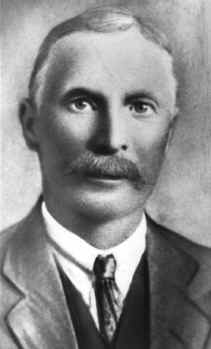 |
 |
| 1. George Clarke |
2. John T P Clarke & Sarah Brown |
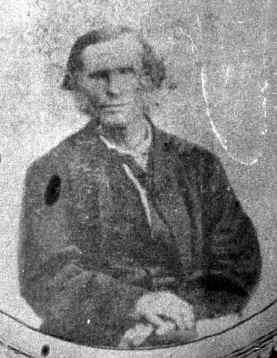 |
 |
| 3. Joseph Rolfe |
4. Mary Anne Rolfe nee Kelly |
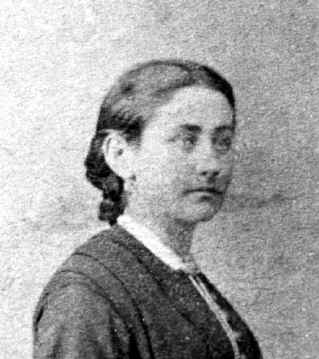 |
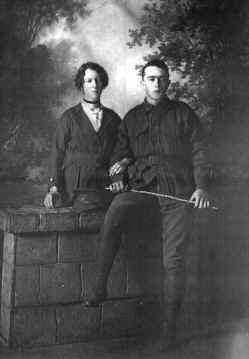 |
| 5. Sarah Clarke nee Welch |
6. Mina Clark and Granville Clarke |
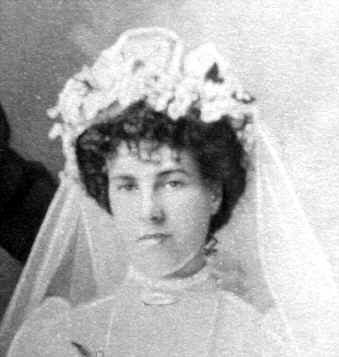 |
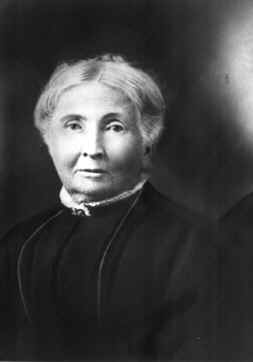 |
| 7. Sarah Clarke nee Brown |
8. Mary Anne Clarke nee Rolfe |
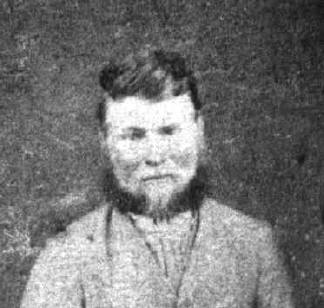 |
|
| 9. Thomas Joseph Clarke |
10. Thomas Clarke |
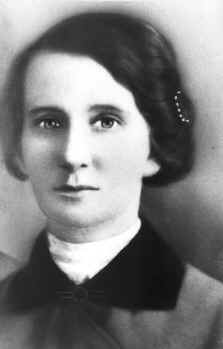 |
|
| 11. Selina Clarke nee March |
Thomas the eighth child of Daniel and Hannah was born at Sutton Forest on the 8th February 1829 and baptised in All Saints Church, Sutton Forest on 28th June 1829. Whether Thomas was the first of their children to be born at Sutton Forest is not certain for Hannah is shown in the 1828 Census to be living at South Creek, Windsor and as the census was taken in November 1828 Hannah would have been nearly 7 months pregnant with Thomas and the journey to Sutton forest would have been quite an undertaking for her, especially in the summer period, but the delay in baptism is more likely to have been caused by the lack of a minister. Whether Thomas was born at Sutton forest or not, the move was to have a profound effect on his life for it was here that he would have grown up with his future wife, Mary Ann Rolfe, and it is necessary to diverge from Thomas for a while to recount the story of Mary Ann’s father.
On the 13th March 1805, in the Gloucester County Court, Timothy Beard was sentenced to Transportation for Life and on 28th January 1806 he left England for New South Wales on the Fortune (first voyage) arriving on the 12th July 1806. Upon arrival he was assigned to Mr John Jamieson, Superintendent of Government Stock. On the 15th December 1817 his application for emancipation, being supported by Samuel Marsden and *****. , was granted and he received a Conditional Pardon. He remained in the service of John Jamieson (who by now had been removed as Superintendent of Stock) but had taken advantage of his circumstances for in 1819 he is listed as suppling 1600 pounds of meat to the food stores. In 1821 he is named as Overseer to Mr Jamieson in a notice concerning the loss of two bullocks.
Timothy Beard married Elizabeth Hennigan at St Lukes Church, Liverpool on 27th December 1821. Elizabeth had arrived in Sydney in April 1821 aboard the Duchess of York. Sarah had come to join her husband James Hennigan, a convict recently arrived in Hobart aboard the Juliana. Accompanying her were her children Joseph and Sarah (children of her first husband Samuel Rolfe). James was allowed to follow his family to Sydney but took ill with a cough and died on 10th July 1821.
Timothy Beard was an industrious person and had obviously used his time in servitude well. By July 1824 he had land on the Cowpasture Road about 9 miles from Liverpool, for he advertised the loss ‘STOLEN or STRAYED’ of a BAY HORSE and it is assumed that he is by this time also running his inn which co-incidentally was known as the Bay Horse Inn. Timothy petitioned the Governor on the 14th October 1826
Application for a grant of Land Without Purchase Bay Horse Public House Sir, I beg you will submit to his Excellency the Governor my request that I may receive a grant of land under the Regulations concerned in the Government order 35 dated 5th September 1826 the means which I propose appropriating to agricultural purposes being as follows viz 120 head of cattle average value £ 6 each £ 720 - 0 - 0 £ 1503 - 0 - 0 Timothy Beard Address care of the |
Life at the inn was not without its incidences and saw a number of robberies. The first robbery occurred on the 18th August 1824 when John Weavers, William Moir and Florence (or Terrence) Henley bashed and abused Timothy and his wife and stole wearing apparel and a watchpiece (among other items). At their trial in March 1825 the goods were shown in evidence and for this crime and another of highway robbery the trio were sentenced to death.
The second robbery occurred in March 1827 when a gang of desperate bushrangers held up the inn and confined about 10 or 12 people in a small room and then plundered the house of about £150 in cash, two muskets and a pistol, besides other property. For this crime William Webb was tried in May 1827, found guilty and sentenced to death. Sentence was carried out on 21st May 1827. The trial of the other offenders Patrick Geary, John Lynch and Thomas Quirk took place in late May and Geary and Quirk were sentenced to death for the crime whilst Lynch was found guilty of another crime and also sentenced to death.
The third robbery occurred on the 30th September 1828 and John Payne and Edward Whalen were brought to trial at the Supreme Court on the 6th January 1829. The report of this trial appeared in detail in the Sydney Gazette:
‘Mr Kerr conducted the prosecution on the part of the Crown
Timothy Beard - I am a publican residing on the Cowpasture Road, District of Cabramatta - about half past 7 o’clock in the evening of 30th September last, I was walking in the garden, when I saw five or six men approaching the house, and went forward to meet them; they were all armed, some with cutlasses, and one with a musket; I asked them who they were, but they made no reply, but began beating me in a violent manner with their weapons; I ran into the house, followed by some of the men still beating me about the head; when in the house, one of the party went into the room where my wife was, and said he would run her through; he had a musket with a bayonet fixed in his hand; they then brought her into the room where I was, and desired her to tell where her money was; she said she had no money,upon which they replied, if she did not produce it, they would light a fire, and burn both her and me to a cinder; they then commenced a search throughout the room, and at length discovered the money between two beds; there was about £60 amount amongst which were 9 £1 notes of the Bank of Australia, and 1 £2 note, and some notes of the Old Bank; they also took a pair of pistols, a silver watch, a coat, three jackets, one waistcoat, a number of shirts, a gold ring, a hat, two or three pair of boots, five gallons of brandy, a number of gold beads, a locket, a pair of ear rings, and some sheets; the men remained in the house about an hour and a half to two hours, during which time they———— me and my wife in a corner of the room and said if we stirred they would blow our brains out; one of them stabbed me several times in the body with a bayonet, so as to draw blood, and said if I attempted to look at them he would run me through; I was confined to my bed for two days, owing to the loss of blood I sustained from the various wounds inflicted by the robbers on my head and body, together with the property they took away, they destroyed several articles; besides myself and wife, there were an old and young man, who crept under the bed through fear; there were about five or six men in the party, and their faces were covered with crepe, but at intervals, I could observe part of their countenances; I cannot swear positively to the prisoners, but they resemble two of the party who robbed me, as to size; I think the prisoner Whalen, was the man who took the money from between the beds; I have seen part of my property, namely, a coat and two jackets since at Campbell Town Court.
‘Elizabeth Beard corroborated the evidence of her husband to the main circumstances of the robbery; I am certain the prisoner Whalen was one of the party; I had seen him frequently before in the house and he had nothing on his face on the night of the robbery; to the best of my knowledge he was the man who took the money from under the bed; I had never seen Payne before that night, but I believe him to be one of the robbers; he stood guard over me, with a bayonet, upwards of an hour, and though his face was partly covered with black crepe, I could distinguish his features; amongst the property taken away, there were some notes of the Bank of Australia, one of which I would know again; it was endorsed to me by Mr Moore, the Magistrate, on the same day.
‘By a Junor - I swear positively that the prisoner, Payne, was the man who stood over me with the bayonet, on the night of the robbery,
‘Thomas Moore, Esq. JP - I am Magistrate of the Territory; I remember in September last, shortly after the robbery at the Bank of Australia, Timothy Beard brought some of the notes of the Bank of Australia to me, to be countersigned by me, I think he brought 9 £1 notes and 1 £2 note and another man named Peter Byrne, brought a £1 note; those are the only notes I have ever endorse; I should know all the notes again.’
The article continues with the supporting evidence of Thomas McAlister, an approver; William Chippendale, Chief Constable of Appin; Owen Langy, Constable of Appin; James Turner, Mounted Police; and Henry Brown, Constable of Campbelltown. Neither prisoner called any witnesses but Payne stated that he was quilty of the robbery but that Whalen was innocent. Whalen protested his innocence. The jury found the prisoners Guilty and they were remanded.
Sentence was passed on the 8th January 1829:
‘John Payne and Edward Whalen convicted of stealing in the dwelling house of Timothy Beard and putting a person there-in in bodily fear, were next placed at the bar, and addressed by Mr Justice Dowling to the following effect:
‘You, John Payne, have been convicted of three capital felonies; one being a burglary in the dwelling house of William Bird, at Bargo, the second, stealing in the dwelling house of Malachy Ryan, at Appin and the third for the same offence committed in the dwelling house of Timothy Beard of Cabramatta. You, Edward Whalen were also indicted for the same offences, but were acquitted of two but found guilty of the third charge, and it is now my painful duty to pass the sentence of the law upon you. The Jury, on your several cases, looked with the most intense anxiety into the evidence acduced against you, and after carefully weighing all the circumstances, came to the conclusion that you were guilty. On the propriety of that verdict there can be no doubt. It is my duty, unhappy men, to warn you that you are on the brink of eternity; that no earthly power can save you from that fate which awaits you. You belong to a gang of desperate marauders, who rode about the country plundering the defenceless settlers, and it is necessary that deluded persons like you who presume the baleful system of bushranging, should be taught that, however they may carry on their depredation's for a time, the strong arm of justice will eventually overtake them. Most devoutedly I conjure you to make use of the short time which can be allowed you in this world, in preparing, by sincere repentance and prayer, for appearing before that tribunal where alone you can receive mercy.’
His Honor then passed the sentence of Death upon the prisoners.’
By 1828 Timothy had expanded his interests beyond the Cabramatta region. In the 1828 Census he is not directly named but two people are named as working for him at Limestone Plains: William Carter as a herdsman and Sambel Hall as a dairyman and these two it is assumed are working the land occupied by Beard near present day Canberra. Timothy, Elizabeth and Joseph are mentioned in the Census but in the modern printed version they appear incorrectly under the name Baird (Sarah is ********). At this time Timothy is listed as having 80 acres at Carnes Hill of which 65 are cleared and he had one horse, and was tenant to 200 acres at Limestone Plains on which he had 10 horses and 230 horned cattle.
A number of assumptions now have to be taken to continue the saga. By 1830 Joseph had come of age (turned 21) and had moved to the Limestone Plains area to run the properties in that area. There were two parcels of land, one is the present day Lanyon (a name given to the property by its later owners) about 30 kilometres south of Canberra on the Murrumbidgee and the other was near the abattoir at Queanbeyan and the property was named Queanbean. Some time around 1830 it is believed Timothy and Joseph moved further a field to the Cooma region. The land at Lanyon was then managed by the husband of Joseph’s sister Sarah who had married George Webb. It was at Lanyon that Joseph met Mary Ann Kelly, a convict transported from Cork for 7 years for stealing Muslin she arrived in Sydney on 31st July 1831 on the Palambam and although listed as having been disposed of to Captain Edwards 17th Regiment, on her banns of marriage she is shown to be in the service of George Webb. George Webb had married Sarah Rolfe at Cabramatta in 1828 and left Liverpool in 1835/36 for the Monaro and settled at Lanyon. In his book a Journey from Sydney to the Australian Alps John Lhotsky mentions a Joe Bird living on the Murrumbidgee River and also a T. Bird owner of Eiemmondgy at the Menero with 600 cattle and having been established about 1832. It is assumed this is Joseph Beard (Rolfe) at Lanyon and Timothy Beard at Ironmungy.
Timothy returned to the Carnes Hill area and Joseph assumes responsibility for the land in the Monaro and George takes over the running of the land on the Murrumbidgee. Joseph uses his family name Rolfe at this time and takes Mary Ann Kelly with him. On the 2nd January 1833 their first child Mary Ann was born (she is believed to be the first white child born in the Monaro). On the 19th September 1835 they married in the church at Sutton Forest and their children baptised in the same church on 13th October 1835.
In 1834 Timothy filed for 790 acres and 300 acres of land at Sutton forest originally granted to Richard Driver and James Powell. They were granted to him on 31st December 1834 at an annual quit rent of £ 6 - 11 -8 and £ 2 - 10 - 0. In 1838 he bought a further 940 acres for £ 399 - 0 - 0. . The land at Sutton Forest adjoined the 600 acres belonging to Daniel Clarke. In 1840 Timothy Beard was granted a pasturage licence on the Maneroo and Beard and Rolfe were granted a licence to depasture in the Maneroo. On the 30th September 1848 claims to leases of crown land were made by Beard and Rolfe for Iron Mungy with an estimated area of 84,000 acres capable of running 1,000 cattle, and Dog Kennel with an estimated area of 12,800 acres capable of running 400 sheep.
Timothy Beard died on 20th December 1848 at the age of 86 and is buried at Liverpool Pioneer Cemetery. His epitaph sums up his life very well:
An industrious man I have been
Many troubles I have seen
In this world I have done my best
And here I lay my bones to rest
On the 27th January 1848 notice was given that within 14 days application for probate of the will to Elizabeth would be requested. Timothy had been 30 years older then Elizabeth and it would appear that he may have had a child in England for upon the scene there appears another Timothy Beard and maybe to avoid any problems Elizabeth married Timothy Beard Jnr at Denham Court on 4th August 1849. (No record can be found of this Timothy’s birth or his arrival in Australia).
On the 12th August 1850 Elizabeth Beard and Timothy Beard Jnr made an indenture in which, for the sum of 10 shillings and in consideration of the natural love and affection, they did grant, devise and lease to Joseph Rolfe the Bay Horse Inn and 100 acres at Carnes Hill, the Shamrock Inn and about 2 000 acres at Sutton Forest, 15 acres at Narellan, the Robin Hood Inn and 4 acres near Campbelltown, a farm of 40 acres on Mytle Creek County of Picton and about 50 acres at Bargo.
In the indenture Joseph is stated as being a Licensed Vitualler and as occupying the Shamrock Inn at Sutton Forest. The land at the Monaro is not named but as this was held by Joseph in joint name with the elder Timothy it would have been his already. It appears Joseph was running the southern interests for Timothy from Sutton Forest where he managed the Shamrock Inn. This inn was adjacent to Daniel Clarke’s 600 acres and so Mary Ann Rolfe and her brothers and sisters grew up with the Clarke family as neighbours.
Thomas Clarke married Mary Ann Rolfe in the All Saints Church at Sutton Forest on 23rd October 1848. Minister was Chaplain W. Stone and the witnesses Daniel Clarke and John Roth. Mary Ann signed her name and Thomas placed an ‘X’. They remained at Sutton Forest where their first child Thomas Joseph was born on 18th September 1849. He was baptised at All Saints Church on 31st March 1850. Soon after they moved to the Monaro and along with Mary Ann’s eldest brother Joseph they ran the properties for Joseph Snr.
Their second child Sarah was born on 22nd May 1851 at Ironmungy as were James John (8th January 1853) and Elizabeth (9th September 1855). About this time they moved to Dog Kennel where they built a stone house near the creek. It was on this property that the remainder of their children were born: William (1st January 1858), Hannah (18th November 1859), Henry (11th June 1862), twins Eliza and Emma (27th February 1865), George (17th October 1866), Mary Jane (8th April 1869), Rebecca (2nd September 1871) and Horatio Robert (23rd March 1873).
Elizabeth Beard died from influenza on the 20th June 1860 at Carnes Hill aged 67. Her goods sworn at £ 100 were granted by act of court to Timothy her husband. Fifteen days later on 5th July 1860 Joseph Rolfe died at the Cowpasture Road from Epilepsy aged 51. They were buried in the Pioneer Cemetery at Liverpool on either side of Timothy Beard the man who had given them a new life in New South Wales. (Timothy Beard Jnr died at George St Sydney on 18th June 1876 aged 75 years and was buried in the Necropolis.)
New Canberra Industrial Estate named after Timothy Beard 19.05.09
Joseph Rolfe’s will had goods sworn in at £ 17,000 and he divided his goods between his children and left for the care of his wife. Mary Ann Clarke received the sum of £ 50 and 100 head of mixed cattle. It would appear from the will that Thomas and Mary Ann were already the owners of Dog Kennel.
According to George Clarke, Dog Kennel received its name when in the early days of the development of the property there were no fences to stop the stock from straying across the creek during dry spells. So at intervals of some 10 yards dogs were chained and kennels were made for each dogs protection from the cold and wet weather. Remember this was snow country and subject to severe cold winds blowing down from the Snowy Mountains.
At what time Thomas shifted his main interest away from cattle and into sheep is not known but sheep and the wool they produce was to become the way for the Dog Kennel property. It is worthy to describe the area of Dog Kennel and Ironmungy as they appear in 1989. Dog Kennel is an undulating area traversed by the upper and lower Dog Kennel Creeks and is mainly devoid of trees. The Ironmungy has the Snowy River as its southern boundary and is relatively heavily timbered. They both lie approximately 30 kilometres from Cooma and Nimmitabel. Into this land Thomas and Mary Ann were to remain for the rest of their lives and many changes were to occur, some of which would affect the life styles of the pioneers of the area.
The first major event to affect the life of the squatters on the Monaro was the discovery of gold on the upper reaches of the Snowy in 1859 and two towns Kiandra and Adaminaby were established and at first rich finds were made. The main rush occurred in February 1860 and by April some 15,000 were on the field. The output for the year was 67,687 oz but it was to dramatically fall to 16,565 oz in 1861 and 7,385 oz in 1862. The country was almost inaccessible (no roads) and supplies had to be brought in by pack horse. Small scale reef mining continued until 1872 but by 1880 both towns were practically deserted.
Many Chinese miners flocked to the field and access was gained by sea to Eden and then overland through Nimmitabel to Kiandra. This took the miners along the road that divided Dog Kennel and Ironmungy. The road can be seen from the house on Dog Kennel and Mary Ann Clarke would sit on the verandah with her children and a shot gun, fearing what the Chinese might do to them whilst her husband Thomas was away. Each year he would be away for several weeks selling the fleece and buying supplies for the year. These must have been trying times for Mary Ann and her young family and reflects highly on the courage of the pioneer women.
With the decline of the gold rush, there was a great demand by the miners for land and in 186? the New South Wales Government reacted with the passage of the Robertson Act which allowed Free Selection without survey. This act made available large areas of land previously leased to ‘squatters’. To overcome the threat, many landholders purchased the choice areas of their holdings, such as water access, and used ‘dummies’ - their young children and employees - to overcome the limit placed on the quantity of land available to each owner. This threat to Dog Kennel was just another trying time to the man on the land.
From research conducted at the Lands Office the following illustrates the land purchases much of the original land of Dog Kennel was taken up by other people but the area purchased by Thomas and his family is shown in the diagram.
Parish of Nelson, County of Wellesley
No Vol Folio Size Name
146 1822 85 101 acres Thomas Clarke
53 248 97 52 Thomas Clarke
111 1563 204 400 Thomas Clarke Snr
2 87 185 50 Exeo Late Joseph Rolfe
32 3477 17 200 William Clarke
96 2918 10 201 James Clarke
1 87 184 40 Exeo Late Joseph Rolfe
141 1719 115 40 Thomas Clarke Snr
42 3477 19 40 Thomas Clarke
41 3477 18 40 Thomas Clarke
133 2750 168 100 Henry Clarke
Parish of Wellington, County of Wellesley
33 40 acres Henry Clarke
98 108 George Clarke
99 71 Thomas Clarke Snr
12 41 George Clarke
164 100 Thomas Clarke
18 100 Thomas Clarke
96 105 Thomas Clarke
95 100 George Clarke
34 40 George Clarke
97 60
George Clarke
Thomas and his young family still had to scratch out an existence and with the increase in family size, a new house was built about 300 metres from the old homestead. Shearing sheds and paddocks were constructed and Thomas became the _______ person in New South Wales to register an ear mark.
On 21st March 1884, Mary Ann Rolfe died at Dog Kennel aged 78 years 6 months and was buried at Cooma (no head stone marks her final resting place). Her son George Rolfe living at Ironmungie was the informant to her death. This was not the first tragedy to strike Thomas and Mary Ann:
Thomas died at Dog Kennel on 21st March 1901 and was buried at the new cemetery at Bobundarah. In his will he left £ 100 to each of his daughters Sarah, Emma and Eliza, and his wife Mary Ann. William’s children received £ 50 each and Hannah’s daughter received £ 20 to be held in trust. The balance of actual cash was left equally between his five surviving sons, Thomas Joseph, James, Henry, George and Horatio Robert. The property was to be managed by the executors’ whom included George, the proceeds going to Mary Ann. Upon the death of Mary Ann the property was to be sold and the money divided equally between the sons.
And so George commenced the running of the property. Mary Ann passed away at Kenilworth on the 15th December 1920 at the grand old age of 89 years. Although failing the last few years she was of a robust disposition and it was only during the last few weeks that she began to sink reports her obituary. During the last few years of her life she received every attention and care, her family sparing no pains in their endeavours to make her happy and contented. The funeral took place at Bobundarah Church of England Cemetery, her remains being laid to rest besides those of her husband. The hearse moving from Kenilworth to Bobundarah under terrible storm conditions, the hearse having great difficulty moving up the gradual slope.
With Mary Ann’s death, the requirement of Thomas’s will was carried out when the property was auctioned. The sale of the land left some ill feeling between the brothers towards George whom they believed was responsible for the low price received at auction. They felt that he had arranged for the sale through a third person. In fact on the 17th February 1923 the land was transferred to Edward Crisp for the sum of £6,732 - 14 - 0 who transferred it to Mina Rolfe (George’s daughter) on the 7th July 1923 for the sum of £6,076 - 10 -6. So George’s heir became the owner of Kenilworth. The result is that the property remained in the family which has held ownership since approximately 1828. Kenilworth was taken over by George’s daughter Mina when his health deteriorated. Georges son Granville had been killed during World War I and George had blamed himself because he had given permission for his son to join.
Mina had married her third cousin Joseph Rolfe in 1916 and so Kenilworth now is in the name of its original family name. Mina’s grandson Stephen took over the running of the property in 1994 from his father John. Kenilworth today is a property of ______ hectares and Stephen has refurbished the old homestead and lets it to visitors who frequent the area in the Snow season.
Thomas Joseph Clarke
John Thomas Percival Clarke was born at Jillamatong, a property near Cooma, on 11th October 1874, the eldest child of Thomas Joseph Clarke and Sarah Ann Clarke (nee Welch). John was a fine horseman and champion pigeon shooter. At the age of 16 he began riding with the Men from Snowy River. The ballad "The Man from Snowy River" by A.B. Paterson, first published in the Sydney Bulletin on 26th April 1890, is a stirring description of the manner in which a young horseman outrode even the boldest of his fellows when rounding up wild horses on the slopes around Mount
Kosciusko. Many claims have been made concerning the identity of the young horseman, some bushman claimed that the original Snowy River personality was "Hellfire" Jack Clarke of Jindabyne. As Paterson said he had not based the story on anyone in particular, and many others have claimed to be the horse, perhaps the truth will never be known but John Thomas was "Hellfire" Jack Clarke. He learnt shearing and by 1904 was station manager for Amos Crisp at Jimenbuen.
On the 20th January 1904, John married Sarah Ann Brown in the Roman Catholic church at Cooma. Sarah was the daughter of Negus Brown and Isabella Brown (nee McDonald) of Gegedzerick (near present day Berridale). Sarah was a music teacher (piano) and had a little fruit and vegetable shop.
Their first child, a son, Lesley was born at Jimenbuen in 1905. Lesley was less than 12 months old when he choked on a dummy that had been given to him by a young cousin who was visiting with her parents. As a result of this no child in the family have since been given a dummy although the design of the modern dummy is vastly different and safer.
Ila the second child was born on the 9th July 1906 and Ella the third child on 30th November 1907. Both were born at Old Adaminaby at Grandma Clarke’s, who was a midwife. Onzey the fourth child and second son was born in 1909. He died tragically the same year when he fell off a horse; his father had him in the saddle and as he tightened the stirrup the child fell.
Lorena was born at Cooma on 17th August 1910 and soon after Ella the third child on 30th November 1907. Both were born at Old Adaminaby at Grandma Clarke’s, who was a midwife. Sylvia, 31st December 1912, Douglas, 26th October 1914 and Phylis 1916 were all born in Goulburn. John would travel shearing and his wife would pack parcels containing warm pyjamas with a chocolate in the pocket. Phylis was born with a bad heart and at the age of a few months she died and was buried on the top of John’s sister Ada. A horse drawn mourning coach took the funeral party to the cemetery. Sitting along the side of the coach looking at each other Ella can remember her mother and father, Ila and herself in the coach with two other ladies; her father held on his lap the tiny coffin containing Phylis.
At the age of three Lorena contacted infantile paralysis. The family had gone to the Highland Gathering at the Goulburn showground. Young Rene (as Lorena was called) had shoulder length hair and had been running down the hill with the wind blowing in her hair swirling it around. That night she was put to bed, she had been a bit whinge, and in the morning as her mother lifted her to dress her, Rene could not stand. Although one leg did get some strength back in later years she was not to walk again.
The family moved to Sydney where Joan was born on the 31st August 1918 at 28 Jarret St Leichhardt. The family moved to Glenore St, Canterbury John worked for Barnes Bacon and at Canterbury was living at Barnes property. John’s brother Albert (known as Bert) lived nearby and also worked for Barnes as did Arthur and Auntie Louisa (Lou).
When Joan was born Sarah became very sick and spent three months in Prince Alfred Hospital. Auntie Lou looked after Doug and Joan whilst, Ila, Ella, Rene and Sylvia went into St Martha’s Orphanage at Leichhardt near their home. At this time plague had broken out in Sydney and on one visit to the Orphanage, Ella remembers Auntie Lou and her mother’s sister Isabel were wearing masks but the baby Joan was not and Ella thought how bad this was.
During the Great War (World War 1), Sarah’s brother Negus was killed. John’s brothers Alfred and Aubrey had served in the AIF and in 1920 a welcome home reception was held in the Canterbury Town Hall for all the servicemen from the Canterbury area. Sarah dressed in a voile frock sang two songs one being The Rose that Grows in No-mans Land.
In 1921 Sarah was pregnant and suffered Bright’s disease. After suffering several kidney fits she was admitted to Women’s Hospital at Newtown where she died. She was seven months pregnant and the baby was still born. The baby was named John and both are buried at Rookwood, the baby nestled in his mothers arms.
At this time Ila was working and took up dressmaking. The problems of raising a family without the help now available was a difficult task. Ella left school the day after her mother died to look after the family and for two years did the cooking, washing and housework. Auntie Nell (Arthur’s wife) would come around once a month to help give the house a good clean. After two years the effort became too much with the children not doing what they were told and so Rene, Sylvia and Joan went to St Joseph’s Orphanage at Gore Hill, Doug went to Westmead and Ella to St Martha’s at Leichhardt for twelve month’s before leaving to take up nursing at Prince Henry’s Hospital at Little Bay. Eighteen months later, after becoming very sick her father insisted she leave and she went to live with Verlie Bradley (her fathers cousin) and then to work for Dr Thompson Private Hospital at Crystal Street Petersham.
Rene died on 24th September 1932 as a result of infantile paralysis and was buried with her mother. Her death greatly upset John. Rene’s funeral procession was the same as her mother’s procession leaving the Mortuary Station at Central railway for Rookwood.
Sylvia and Joan left the orphanage to work at a tap factory and lived with their father in a flat in Enmore. John went to live in the gardener’s cottage at Sir Hugh Dixon’s property near Hurlstone Park where he looked after cattle, including time at the Royal Easter Show. Ella played the piano at the Hurstone Park picture show (aged 16) during the silent movie days.
John moved to Forbes St Darlinghurst and was a nightwatchman at Auburn. He died on 4th September 1937 from pneumonia at the age of 62. He is buried with his family in Rookwood.
Arthur James Clarke was born on 19.7.1882 at Cooma and married Bridget Carr born 6.12.1889.They married on 2.1.1912 and lived on a farming property at Booyong , Northern NSW where they had 8 children most of whom lived on the farm until adulthood. Bridget died 3.3.71, and Arthur James died 17.7.1972
Arthur had an avid interest in cricket and legend has it that he bowled the Australian Test Captain, Warwick Armstrong for a duck. However, Victor Trumper scored a century (at Goulbourn) He took 5 wickets for 47 runs against the Victorian side . He received a gold medal for his bowling achievements. He was employed at the Sir Thomas Mort Cheese Factory at Bodalla in his early years . He was plagued by Asthma for much of his life but outlived several of his children. The farm was totally run without electricity or modern conveniences but there was a family car (Chev), previously owned by granny’s uncle, and horse and sulky. The paddocks were ploughed with the aid of draught horses ,water was collected daily from the creek by horse and slide for general use, and the pigs were taken to the sale yards by horse and dray.
The farm boundaries were fenced by stone walls which were constructed during the clearing of the land for farming. A cedar forest was cleared by the original free settlers (granny Clarke’s uncle ) who used pit saws to make wooden planks for building. The old farm house was constructed mainly of cedar and over the years, the boards shrank and visible gaps were present in the walls .It was a typical farmhouse of that period having 2 distinct areas joined by a landing. One building was used for cooking, dining, sewing and general living area and the other section was mainly bedrooms and a sitting room. Each building had a verandah which was used for additional sleeping areas. A separate laundry cum bathroom was situated outdoors.
The farm was mainly dairying and was fairly self sufficient with edible crops, pigs and poultry. Pearce’s Creek which ran through the property provided the odd fish or two; mainly perch and catfish. The family vegetable garden was a good provider and large fruit trees surrounded the old farm house. Granny was an avid gardener who could grow just about anything from a cutting. Calves and pigs were sent to the market and provided extra income. Cream was sent to the Norco Butter Factory .
Descendants of Thomas Clarke
![]()
Ian Harvey <iansharvey-at-bigpond.com> 10.03.07
Laraine Morton <lorraine.morton-at-bigpond.com>
06.07.07
Recompiled from the new Monaro Pioneers database by Ian Harvey 12/08/07
with additional material supplied by:
Laraine Morton <lorraine.morton-at-bigpond.com> 10.08.07
Sue Kirk <kirksue-at-juno.com> 2.10.07
Sheena Johnson [sheena.johnson-at-optusnet.com.au] 13.08.09
John Watson [watsonjs2-at-internode.on.net] 16.11.09
|